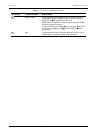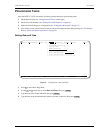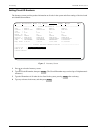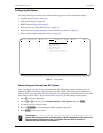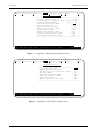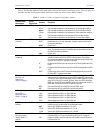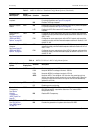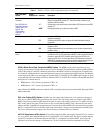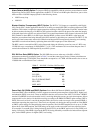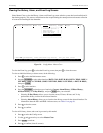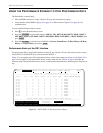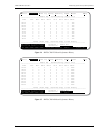
Provisioning LTPH-UM-1031-03, Issue 3
22 September 12, 2003 H4TU-C-319 List 1
Alarm Pattern (ALMP) Option. To improve HDSL4 compatibility with the switch-to-protect features used in
Digital Loop Carrier (DLC) feeder applications, the H4TU-C-319 has an ALMP option that allows you to select
either an AIS or LOS DS1 output payload for the following alarms:
• LOSW on any loop
• LOS DS1
Bipolar Violation Transparency (BPVT) Option. The H4TU-C-319 improves compatibility with Digital
Loop Carrier (DLC) feeder applications because of its ability to transmit DS1 BPV occurrences between its DS1
interfaces. This feature is required to support protection switching in DLC applications. Each DLC terminal must
be able to monitor the integrity of its Receive DS1 payload and then switch to the protect line when the integrity
of the path drops below specific user selected limits. An essential requirement of this feature is the need for each
DLC terminal to detect BPVs in its DS1 input. Standard HDSL systems correct DS1 BPVs at the input and,
therefore, prevent them from being detected by the DLC terminals to which they are connected. The H4TU-C-319
and its associated remote units remove this limitation and become BPV transparent by detecting and counting
input BPVs at each end and then by replicating them at the DS1 output port of the distant end.
The BPV count is converted into BPVs at the distant end during the following second at a rate of 1 BPV every
128 DS1 bits up to a maximum of 12000 (BER=7.7 x 10
-3
). This maximum rate is more than adequate since it
exceeds the maximum 10
-3
BER required by most DLC systems.
DS1 Bit Error Rate (DBER) Option. The DS1 BER alarm occurs when any of the DS1 or DSX-1
performance monitoring parameters listed in Table 7 exceed the counts shown for the 24-hour period between
12:00:00 AM through 11:59:59 PM. These thresholds correspond to a 10
-6
BER. All PM counters clear to zero at
12:00:00 AM or when Master Clear is selected.
Power Back Off (PBON and PBOC) Options. Power Back Off Network (PBON) and Power Back Off
Customer (PBOC) allow the HDSL4 circuit to support two transmit power templates: default (DEF), higher level,
and enhanced (ENH), lower level. These are defined in the four-wire section of the ANSI T1.418 Issue 2 HDSL2
standard. Each HDSL4 receiver detects the level it is receiving during the start-up, pre-activation sequence. It then
compares this level to the level it should be receiving according to the PBON and PBOC option settings (DEF or
ENH). If the received level is outside the template limits, the receiver sends a message to the upstream HDSL4
transmitter requesting the proper level. These levels are adjusted only during the start-up routine or if the PBON
or PBOC option settings are changed during normal operation. Since the ENH template levels are up to 15 dBm
below those of the DEF template, the ENH setting can be used to reduce crosstalk levels into adjacent circuits.
(For example, if crosstalk noise is being induced by the H4TU-R, set the PBOC option to its lower (ENH) level
setting. Conversely, if the HDSL4 signal at the H4TU-R is being affected by crosstalk noise induced from adjacent
pairs, set the PBOC option to its higher (DEF) level setting.
Table 7. DS1/DSX-1 24-Hour PM Threshold
Parameter Threshold Count
CV-L (BPV) 133,400
CV-P (CRC) 132,960
CV-P (FE in SF) 691
ES-L, ES-P, PRM-NE, PRM-FE 648
SES-L, SES-P 100
UAS-P, UAS-L 10



